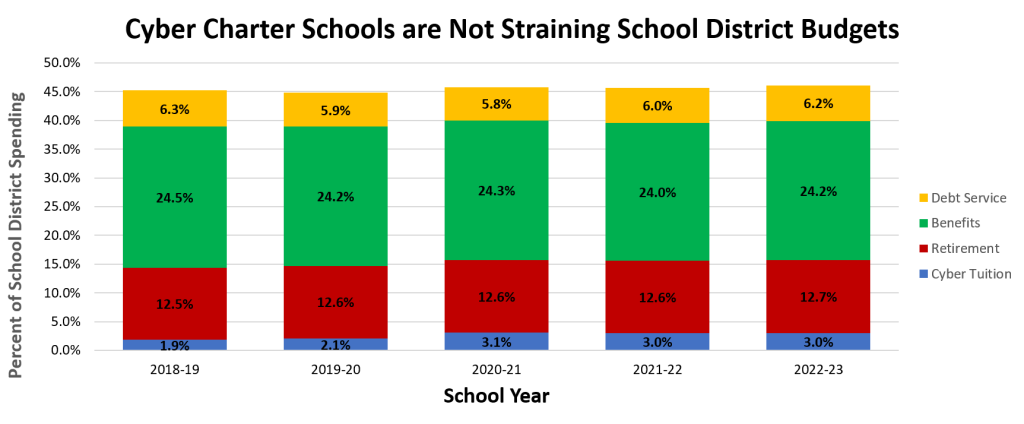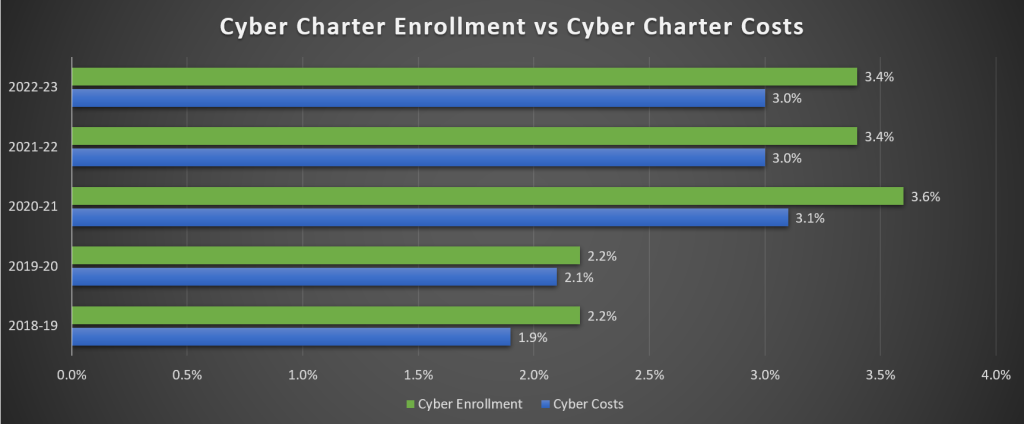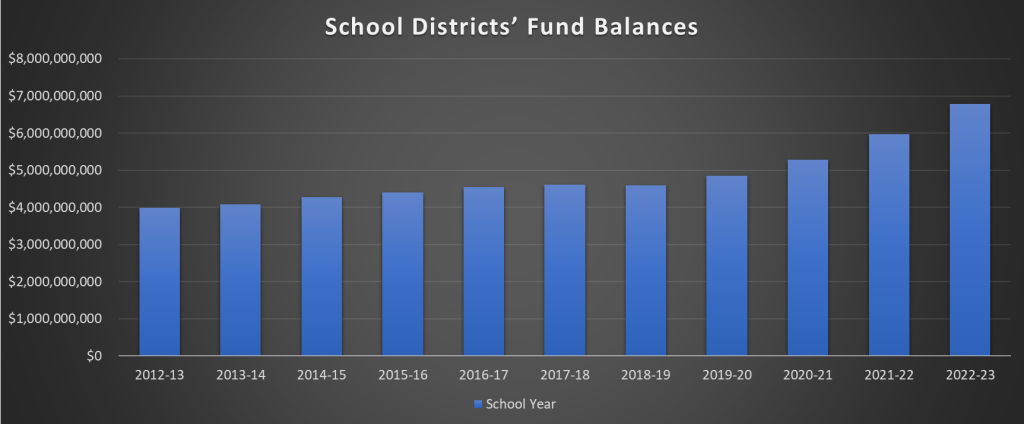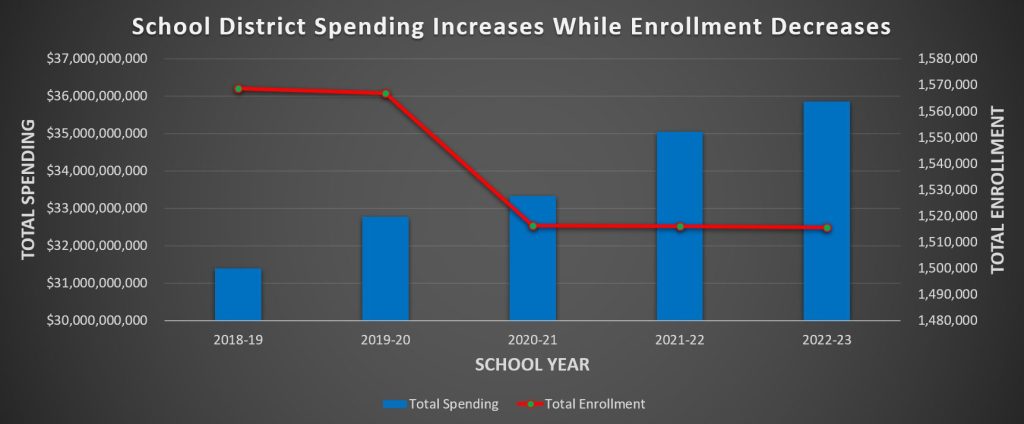School districts, traditional public education establishment organizations (PSBA, PSEA, PASBO, PASA), and many lawmakers claim that public cyber charter schools are having a negative impact on school district budgets and taxpayers. The data does not support this claim. The largest costs borne by districts are employee benefits, retirement, and debt service payments.
The below chart shows that public cyber charter schools are NOT bankrupting school districts.
As of the 2022-23 school year, cyber charter school tuition costs accounted for 3% of school district spending, while retirement was 12.5%, employee benefits was 24.2%, and debt service was 6.2%.

As of the 2022-23 school year, public cyber charter schools accounted for 3.4 percent of the students enrolled in public schools across the state, but public cyber charter schools only accounted for 3 percent of total spending by school districts (see below chart).

As of the 2022-23 school year, school districts had a combined $6.8 Billion in reserve funds. This has grown by more than $2.7 Billion since 2013.

From 2018 to 2023, school district spending increased by $4.5 billion (14.2%) while school district enrollment dropped by 53,111 (3.4%), and yet, Governor Shapiro and several lawmakers are calling for funding cuts to 60,000 public cyber school students.

School Districts Cry Lack of Funding But Spend Millions on Construction
School districts across Pennsylvania claim they don’t receive enough state funding, but they spend hundreds of millions of dollars on construction projects.